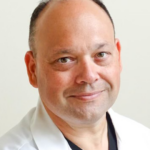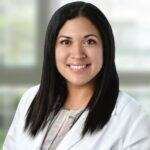
Daily Schedule for Las Vegas, NV CME Conference
Whether you practice full-time and strive to sharpen your skills, or you work occasionally and need to improve your knowledge base, there’s something for everyone here! Perhaps you just want to stay current and pass your recertification exams. Plus, this exciting program allows participants to come early and/or stay over the weekend for a vacation. Discounted hotel rates apply! Schedule is preliminary.
Topics, times and presenters subject to change.
Product Theater (Non-CME) denoted by *
*Number of hours depends on your course selection. Rx denotes Pharmacology hours. Daily CME credits listed are the maximum number of credits available for that specific day.
Monday, November 13 – Early Registration 2:00 – 5:00 pm
- November 14
Day 1 -Tuesday
Dermatology - November 15
Day 2 – Wednesday
Orthopedics
(Room A) - November 15
Day 2 – Wednesday
Pain Management/Pharmacology Update
(Room B) - November 16
Day 3 -Thursday
Cardiology & Emergency Medicine (Room A) - November 16
Day 3 – Thursday
Diabetes (Room B) - November 17
Day 4 – Friday
Women’s Health

Victor Czerkasij, MA, MSN, FNP-BC, DNP
View Speaker Bio
6:30 – 8:00 AM Registration and Breakfast
7:30 – 8:30 AM “We’re Number One!” Skin Cancer: Best Practices in Diagnosing and Treatment (Rx=0.25)
More people are diagnosed with skin cancer each year than all other cancers combined, with 20% of all Americans experiencing skin cancer by age 70 and nearly three deaths an hour. While highly curable in the early stages, the death rate of non-melanoma skin cancers continues to climb. In addition, the diagnosis and treatment increased by 77% between 1994 and 2014 and almost an epidemic in 2021. Consequently, all providers across every specialty must be especially tuned to understanding the basic facts of this expensive and disfiguring healthcare crisis. The presentation will identify and prevent the most common skin cancers, where they are most likely to be located, and procedures one must gain to address once suspicion is aroused.
8:30 – 9:30 AM “Take Me Out to the Emergency Room.” Sports Dermatology (Rx=0.25)
On any given day, 20% of Americans aged 15 years or older participate in some exercise and sport. Invariably, superficial injuries, contusions, infections, and open skin wounds make up most sports- and recreation-related injuries presenting to a PCP. Jogger’s nipples, dermatitis from rosin, friction blisters, sunburns, turf toe, fungal and bacterial infections, green hair from chlorine, and even sea bather’s eruptions are among the many topics that will be covered in this fast-paced, well-illustrated lecture providing tips on diagnosis and straightforward treatment paradigms.
9:30 – 9:45 AM Break
9:45 – 11:15 AM “FUNdamentals of the Oldest Specialty”: A Dermatology Primer: Learning to Assess, Diagnose and Make Sense of Common Conditions and Lesions
The study of dermatology is often considered one of the most difficult specialties. As the largest body organ, it suffers nearly 3,000 diseases, and disorders – more than any other medical arena –, and providers tend to shy away from a thorough study. Together, we will build a framework to increase confidence in identifying and treating the bulk of the most common conditions and lesions of our clients, provide basic insight instruction in the work of dermatology, with important insight for expanding our knowledge base.
11:15 AM – 12:30 PM Lunch & Learn Sponsored by AstraZeneca or Lunch on Your Own
12:30 – 2:00 PM “Do It for the Children”: Pediatric Dermatology (Rx=0.25)
Treating children and teens present with many challenges: dosing is often confused with adults; few clinical trials in children; off-label use is prevalent; hepatic and renal clearances vary; the adverse effects panel is much broader, and generally, the younger the child, the less communicative or cooperative. So, what to do with the strange moles, new warts, obvious hair loss, chipped nails, dry skin, blistering acne, flaky scalp, sweating palms, and armpit cysts? Join us to explore this overview of common and frustrating conditions made simple and straightforward.
2:00 – 2:15 PM Break
2:15 – 3:45 PM “When Candles Cost More Than Cake”: Dermatology in the Older Adult Population (Rx=0.25)
Americans 65 and older are the fastest-growing age demographic and poised to become the largest segment of American society in only a few years. This group presents with very specific needs and care, particularly with issues of skin, which must maintain its’ health and vitality through these important years. Drug eruptions, atopy, psoriasis, stasis dermatitis, intertrigo, rosacea, xerosis, maddening pruritus, and stubborn seborrheic dermatitis are only a few of the challenges. Our presentation will discuss prevention strategies, highlight risk factors and deliver solid, proven evidence-based interventions.

Christopher Hemmer, DNP, ANP-BC, ONP-C, FAANP
View Speaker Bio
6:30 – 8:00 AM Registration and Breakfast
7:30 – 8:30 AM I Am Not Spineless
This session will focus on an all-too-common problem, low back pain. A short introduction to the anatomy will take us into the commonly seen complaints in urgent care and PCP offices. Next, we will review and understand red flags and pathologic reflexes that would alert the clinician for a prompt referral. A brief review of the treatment options will also be discussed. Video clips, X-ray, MRI, and CT imaging will be used to help demonstrate pathology. This presentation will help remove some of the fear and uncertainty of low back pain.
8:30 – 9:30 AM The Pain in My Neck Is Not From the In-Laws
This session will focus on non-traumatic neck pain and cervical radiculopathy. The participants will learn various exam techniques through video and a strong understanding of the neurologic anatomy associated with neck complaints. Specialized testing for cervical myelopathy will be addressed as well as a physical exam for the non-trauma neck pain patient. A brief review of the treatment modalities and radiographic findings will also be demonstrated. This presentation will assist the clinician in understanding urgent from routine pathology.
9:30 – 9:45 AM Break
9:45 – 11:15 AM I Think I Broke My Rotary Cup!
This session will address a widespread problem for many generations of patients, shoulder pain. Contrary to many patients’ beliefs, there are numerous pathologies that can affect the shoulder besides rotator cuff injuries. This presentation will assist the clinician in understanding common presentations for shoulder pain with a strong emphasis on physical exam techniques. The exam techniques will better allow the provider to understand the pathology of the complex shoulder joint. Numerous videos will be used in this presentation to teach many of the commonly used specialized shoulder examination tests and what they may imply.
11:15 AM – 12:30 PM Sponsored Lunch or Lunch on Your Own
12:30 – 2:00 PM CXR for the PCP…Do You See What I See?
Chest X-ray (CXR) is the most ordered radiologic diagnostic, yet it can be one of the most complex to understand. CXR combines organs, bones, soft tissue and comprises innumerable pathology of the cardiac, pulmonary, and gastric systems, to name a few. This presentation will break down CXR interpretation by first reviewing what is expected. Then, multiple diagramed studies will be used, and typical findings related to asthma, COPD, cardiomegaly, infiltrates, Covid, CHF, & pneumothorax. Finally, case studies will be used to enhance the learning process.
2:00 – 2:15 PM Break
2:15 – 3:45 PM At Least It Is Only Fractured and Not Broken
This session will be a “smorgasbord” of radiologic case studies. Numerous cases from a local emergency department will be reviewed, covering the common and not-so-common osseous diagnosis and treatment options. Topics will also include commonly diagnosed fractures, dislocations, and soft tissue abnormalities diagnosed with plain radiographs. This will be a fun participant interaction presentation.

Theresa Mallik-Searle, MS, PMGT-BC, ANP-BC
View Speaker Bio
6:30 – 8:00 AM Registration and Breakfast
7:30 – 8:30 AM Demystifying Pain Assessment: What Every Clinician Needs to Know (Rx=1.00)
At least 116 million U.S. adults, more than the number affected by heart disease, diabetes, and cancer combined, suffer from chronic pain. Across the life span, pain is one of the most frequent reasons for healthcare visits, among the most common reasons for taking medications, and a major cause of work disability.
Effective management of pain requires an understanding of the underlying mechanisms responsible for its generation. Additionally, effective clinical interviewing and pain assessment is critical to the appropriate diagnosis and management of pain. In this presentation, a general overview of pain mechanisms will be discussed. The clinician will learn how to apply principles of effective communication and ascertain how to evaluate available assessment tools to form a framework for a comprehensive patient-centered approach to formulation and treatment planning.
8:30 – 9:30 AM Rational Polypharmacy for Pain Management: The Non-opioid Version (Rx=1.00)
With the opioid crisis continuing to rage, the number of opioid-related deaths continuing to rise, insurance companies refusing to pay for quantities of opioids, pharmacists refusing to dispense quantities of opioids, peer-to-peer watchdogging, what is a clinician to do about helping manage their patient’s pain? This lecture will focus on using rational polypharmacy effective for the management of pain.
We will explore clinical indications, contraindications & dosing for common non-opioid analgesics, such as the use of anticonvulsants, antidepressants, and over-the-counter analgesics.
You will learn where analgesics act in the pain pathway and how the use of medications synergistically may make sense to use together.
9:30 – 9:45 AM Break
9:45 – 11:15 AM Safe Opioid Prescribing: How, When & When Not to Prescribe (Rx=1.50)
In response to the public health crisis of opioid abuse and overdose, the U.S. Food & Drug Administration issued a Risk Evaluation and Mitigation Strategy (REMS) recommendation for all opioids. The REMS is part of a larger federal effort to reduce risks associated with prescribing long-term opioid therapy. This national response has recognized that improved knowledge of opioid safety is an essential clinical practice competency for all prescribers of opioids.
This lecture will discuss pain from a contextual perspective, patient selection, and assessment of risk associated with opioid use for long-term management of chronic pain. The CDC guideline for prescribing opioids for chronic pain and the use of opioids for short-term acute pain will also be discussed. A brief discussion on the consideration for and initiation of medication-assisted therapy (MAT). Prescribing opioids safely ultimately depends on the trust between the prescriber and patient. Training can improve trust by improving communication and collaborative skills.
11:15 AM – 12:30 PM Sponsored Lunch or Lunch on Your Own
12:30 – 2:00 PM Casting a Wider Net, the Use of Non-pharmacological & Complementary Treatments
Pain affects physical and mental functioning, quality of life, and productivity. Yet, in recent years, the over-reliance on pharmacotherapies alone has been seen as a highly ineffective way of managing chronic pain. As a result, the HHS Pain Management Best Practices Inter-Agency Task Force in 2019 released a report for best practice in managing chronic and acute pain, highlighting the use of a multimodal treatment strategy for improved outcomes.
Clinicians need the education, resources, and tools to engage and effectively manage their patients with chronic pain. In this up-to-date review, we will discuss the most practical, evidenced-based, possibly overlooked non-pharmacological modalities that clinicians can use as stand-alone therapies or in a combined multimodal treatment approach for the best possible outcomes in managing patients with chronic pain conditions.
2:00 – 2:15 PM Break
2:15 – 3:15 PM The Chronic Pain Trifecta: Common Pain Diagnoses in Primary Care (Rx=1.50)
In this session, we will cover the assessment and management of three of the most common chronic pain diagnoses in primary care – migraine, low back pain, fibromyalgia – highlighting what was learned in the earlier lectures regarding evidenced-based pharmacological and non-pharmacological approaches. Assessment and treatment of migraine have advanced in recent years. No longer should patients’ have to wait for a referral to a “headache specialist” for management. Instead, we will simplify the diagnosis, rule out a secondary/pathological headache, and introduce the newest treatments available.
The diagnosis of fibromyalgia was once seen as a diagnosis of exclusion, possibly psychosomatic in origin. However, new research provides evidence that fibromyalgia is a central pain disorder. With new evidence to a more accurate diagnosis, new treatment paradigms are being explored.
Low-back pain is the number one reason patients present to their primary care provider’s office. At some time in their lives, every patient will suffer from LBP (either acutely or chronically). When it comes to effective treatment of LBP, it’s all about making the correct diagnosis.
By the end of this 90-minute lecture, you will gain the skills to assess migraine like a Neurologist, manage fibromyalgia like a Rheumatologist and treat low back pain like a Physiatrist!

Jennifer Carlquist, PA-C, ER, CAQ
View Speaker Bio
6:30 – 8:00 AM Registration and Breakfast
7:30 – 8:30 AM EKG 123: A Basic Review
This session will focus on the “10 Step System” to reading an EKG, contagious and reciprocal changes. We will discuss the intervals on the 12 lead and how they help you make your diagnosis. In addition, we will review the segments and the waves of the EKG and compare and contrast a normal EKG against an ischemic EKG.
8:30 – 9:30 AM Cardiac Cocktails: Are We the New Bartenders? (Rx=0.50)
• AF “cocktails” and treatment strategies
• The Heart Failure “Martini” and how to adjust to taste
• The “Cardiac Happy Meal” – post-STEMI treatment regimen
• Common side effects of cardiac medications and how to spot them
Participants will learn strategies to combat AF and use the CHADS score to define risk.
CHF recipes will be discussed on how to adjust/maximize diuretics and how the new novel agents may play a role in treating CHF. We will also discuss the role of the “Cardiac Happy Meal” and tailor the medications to prevent side effects. Finally, a case-based review of some of the more common side effects of cardiac medications and how to identify them will be discussed.
9:30 – 9:45 AM Break
9:45 – 11:15 AM Common Cardiology Complaints and How to Work Them Up
In this presentation, we will review specific questions to ask a patient who has palpitations, what findings you must look for every time, what tests to order on a chest pain patient, and what differentials to consider on someone who is dyspneic.
11:15 AM – 12:30 PM Sponsored Lunch or Lunch on Your Own
12:30 – 2:00 PM Cardiac Murmurs – Whispers of the Heart
We will review murmur terminology, grading, and the five murmurs that you cannot afford to miss. This presentation will be presented in a case-based fashion.
2:00 – 2:15 PM Break
2:15 – 3:45 PM How Much Should I Worry About This EKG?
Real EKGS and cases will be reviewed. This lecture is a “Can’t-Miss” topic if you do sports physicals! We will cover the five findings that could have very different outcomes, including Brugadas Syndrome and Hypertrophic cardiomyopathy. We will also discuss the EKG Findings associated with each of these high-risk findings and the findings to spot that the machine will miss!
OPTIONAL WORKSHOP
4:00 – 6:30 PM Hands-On EKG Workshop + $99
In this 2.5 hours hands-on course, we will cover all these things and more! We will discuss reciprocal changes and contiguous leads. You will get a chance to draw them on your sample EKG and make it into a cheat sheet you can use in the clinic. You will go hands-on in your workbook with 17 EKGs in class using pattern recognition to spot the high-risk findings. This hands-on approach helps you “put it all together” finally. If you feel overwhelmed by all the things we have to know but don’t know where to start, this is a quick condensed course that only focuses on the high-risk findings you need to know to be a safe provider.
This is a hands-on workshop. If you register for the in-person conference & workshop, you must attend the workshop in-person.

Dianna Isaacs, PharmD, BCPS, BCACP, CDCES, BC-ADM, FADCES, FCCP
View Speaker Bio
6:30 – 8:00 AM Registration and Breakfast
7:30 – 8:30 AM Current State of Diabetes and Standards of Care
This session will include the prevalence and incidence of diabetes, distinguish between the different types of diabetes, how they are diagnosed, and the treatment goals.
8:30 – 9:30 AM Pharmacologic Treatment for Type 2 Diabetes (Rx=0.75)
In this presentation, we will discuss the treatment algorithms from the American Diabetes Association and the Association of Clinical Endocrinology and introduce the various pharmacologic options.
9:30 – 9:45 AM Break
9:45 – 11:15 AM The Ins and Outs of Insulin Therapy (Rx=0.75)
This session will include differences between types of insulin, how to calculate doses, how to make adjustments, and how to use insulin in conjunction with oral and non-insulin injectable medications.
11:15 AM – 12:30 PM Sponsored Lunch or Lunch on Your Own
12:30 – 2:00 PM Reducing Cardiovascular Risk (Rx=0.75)
This session will focus on the foundational pillars of reducing risks for people with diabetes including managing lipids and blood pressure, and a deep dive into the data that supports use of GLP1 agonists and SGLT2 inhibitors to reduce cardiovascular risk.
2:00 – 2:15 PM Break
2:15 – 3:45 PM Diabetes Technology and Beyod (Rx=0.50)
This presentation will explore the different types of diabetes technology including continuous glucose monitors, connected insulin pens, insulin pumps and mobile apps to support people with diabetes.

Melissa Rodriguez, DMSC, PA-C
View Speaker Bio
6:30 – 8:00 AM Registration and Breakfast
7:30 – 8:30 AM The Ins and Outs of the H-P-O Axis (Hypothalamic-Pituitary-Ovarian)
In this session, the discussion of hormonal control of the menstrual cycle will be presented. We will also review the hypothalamus to the reproductive organs. In addition, you will learn what happens when things go awry and its implications on fertility quality of life. We will also review the treatments for amenorrhea, anovulation, polycystic ovarian syndrome, and others. Most importantly, patient education techniques will provide an easy tool for your patients and staff. You will understand the normal menstrual cycle and all its distorted presentations.
8:30 – 9:30 AM Abnormal Uterine Bleeding (AUB) in the Reproductive Age (Rx=0.25)
In this session, we will explore irregular menstrual bleeding. This is a common concern experienced by menstruating people and has many potential causes. We will review the oft-cited PALM-COEIN framework, which includes the most common causes, including structural and non-structural causes. There will be a brief review of the assessment process during the focused history and physical exam, that will quickly help to understand the benefits of laboratory and imaging tools. The initial management of the identified condition and available treatment options will also be shared.
9:30 – 9:45 AM Break
9:45 – 11:15 AM The Birthing Process
We were born for this, right? Other than pain, most people generally know very little about the process. Let’s review the physiology of pregnancy and its contributions to the birthing process, including critical hormones and adaptations. A dive in the past shows us prehistorical and ancient depictions of laboring women surrounded by supporting women. We aim to understand this connection, the advancement of maternal care, and tips and tricks for the best experience. We will also review deliveries in low-resource settings.
11:15 AM – 12:30 PM Sponsored Lunch or Lunch on Your Own
12:30 – 2:00 PM Optimizing the Postpartum Period for Primary Care (Rx=0.25)
In this session, we will review what should happen after birth. Historically, women will only follow up with their obstetrician for six weeks postpartum. With the high rate of maternal mortality, particularly in the postpartum period, it is important to identify the specific needs to provide appropriate care better. We will review the most common causes for maternal morbidity and mortality and potential medical complications in the future. Additionally, can the implementation of a postpartum handoff be of use? At your next visit with a mother, know how to best approach the obstetric history to optimize her health.
2:00 – 2:15 PM Break
2:15 – 3:45 PM Ovarian Overview
The mighty ovary will be reviewed in this session. We will explore its function from early life until menopause. Additionally, we will discuss the theories behind ovarian cancer formation and its relationship to the fallopian tubes. Ultimately, you will learn to assess ovarian pathology and the dysregulation of hormone synthesis. Next time you have a patient concerned about a corpus luteal cyst, it will be a breeze to explain.
DIABETES

Debbie Hinnen, APN, BC-ADM, CDCES, FAAN, FADCES
View Speaker Bio Watch Speaker Video
6:30 – 8:00 AM Registration and Breakfast
7:30 – 9:30 AM DIY Diabetes (Part 1)
Do not let Diabetes overwhelm you. If you understand the metabolic defects and how medications address those problems, you are well on the way to Doing It Yourself. Do you ever need to refer to a diabetes specialist? Of course. For comprehensive diabetes self-management education and medical nutrition therapy for EVERY patient; at diagnosis, annually and when major medication and life changes occur. Can you manage their medication therapy? Yes! This workshop will help you be pro-active with diagnosis, medication management, therapy intensification, 5-minute nutrition counseling, dealing with barriers your patients with T2DM struggle with, and when to refer to the diabetes specialist.
9:30 – 9:45 AM Break
9:45 – 11:15 AM DIY Diabetes (Part 2) (Rx=1.50)
Do not let Diabetes overwhelm you. If you understand the metabolic defects and how medications address those problems, you are well on the way to Doing It Yourself. Do you ever need to refer to a diabetes specialist? Of course. For comprehensive diabetes self-management education and medical nutrition therapy for EVERY patient; at diagnosis, annually and when major medication and life changes occur. Can you manage their medication therapy? Yes! This workshop will help you be pro-active with diagnosis, medication management, therapy intensification, 5-minute nutrition counseling, dealing with barriers your patients with T2DM struggle with, and when to refer to the diabetes specialist.
11:15 AM – 12:30 PM Lunch & Learn or Lunch on Your Own
ER

Melissa Kalensky, DNP, FNP-BC, CNE
View Speaker Bio Watch Speaker Video
12:30 – 2:00 PM Making Your “What Can Kill” List & Identifying That “Needle in a Haystack”
We often see the same complaints over and over again yet, less than 10% of those cases are triaged as requiring immediate or emergent intervention upon arrival to the emergency room. This presentation will look at some of the most common clinical complaints – abdominal pain, chest pain, fever, cough, and headache – focusing on quickly identifying “red flags” that require expedient workup. We will focus on elements of the history/physical exam that can help you consider how to triage these patients and work through some cases involving common complaints that end up as clinical zebras.
2:00 – 2:15 PM Break
2:15 – 3:45 PM Abdominal & Pelvic Pain- From Cholecystitis to Cervicitis, to Calculi, Oh My! (Rx=0.25)
This presentation will focus on the nearly 1 in 10 patients presenting to the emergency department who have a complaint of abdominal and/or pelvic pain for less than seven days. We will discuss elements of the history and physical exam that are essential in building a broad differential, including atypical presentations. We will review considerations in ordering the most appropriate laboratory and imaging studies to narrow this differential and rule out life-threatening pathology. Particular considerations for changes in pathology with age, acute pain in pregnancy, and pain accompanied by vaginal bleeding will be highlighted as well.

Lakshi Aldredge, MSN, ANP-BC, DCNP
View Speaker Bio Watch Speaker Video
6:30 – 8:00 AM Registration and Breakfast
7:30 – 8:30 AM Approach to the Patient with Cutaneous Disorders
Does your heart sink when you see a patient on your schedule with the dreaded “skin rash”? Then this session is for you! We will provide a fun and interactive, case-based overview of approaching the patient with a skin complaint. We will review common dermatologic nomenclature, what clues to look for to help nail the diagnosis and provide important tips on managing and educating your patients. This is the “fundamentals in dermatology” session that we all wish we had in our clinical, educational programs!
8:30 – 9:30 AM Overview of Papulosquamous Disorders
This session will provide an engaging overview of the most common skin conditions seen in dermatology, including atopic dermatitis, psoriasis, contact dermatitis, and all those under red itchy rashes and bumps! You’ll have fun viewing many skin condition images and identifying clinical features to help distinguish one skin rash from another. We will also be providing the latest evidence-based guidelines on common conditions so you will be fully updated and “in the know”!
9:30 – 9:45 AM Break
9:45 – 11:15 AM Infectious Disorders of the Skin (Rx=0.50)
This session will provide you with a comprehensive overview on the management of common bacterial, viral and fungal cutaneous conditions from Impetigo to Lyme Disease. Wondering if you need to do a biopsy or send a tissue culture or bacteria swab? We’ll provide you with the latest updates on the most appropriate tests to obtain the correct diagnosis. We will also be updating you on the latest information on the cutaneous manifestations of the COVID-19 virus and treatment management.
11:15 AM – 12:30 PM Lunch on Your Own
12:30 – 2:00 PM What’s New in the Dermatology Drug Cupboard? (Rx=0.75)
Confounded by that pesky skin rash? What to do with that skin infection? This session will give you the most up-to-date, evidence-based guidelines for the treatment of common skin conditions. We will review therapeutic classes of topical and systemic medications, treatment parameters, monitoring guidelines, and patient teaching pearls. You’ll leave this session feeling confident and prepared to treat the most challenging dermatologic conditions.
2:00 – 2:15 PM Break
2:15 – 3:45 PM Diagnostic Dilemmas in Dermatology (Rx=0.25)
Put your knowledge to practice in this fun and interactive case-based session. We will present some common and not-so-common clinical cases of dermatological dilemmas and help you come up with the best answer. Grab your Sherlock Holmes hat and magnifying glass and prepare to be pleasantly puzzled!